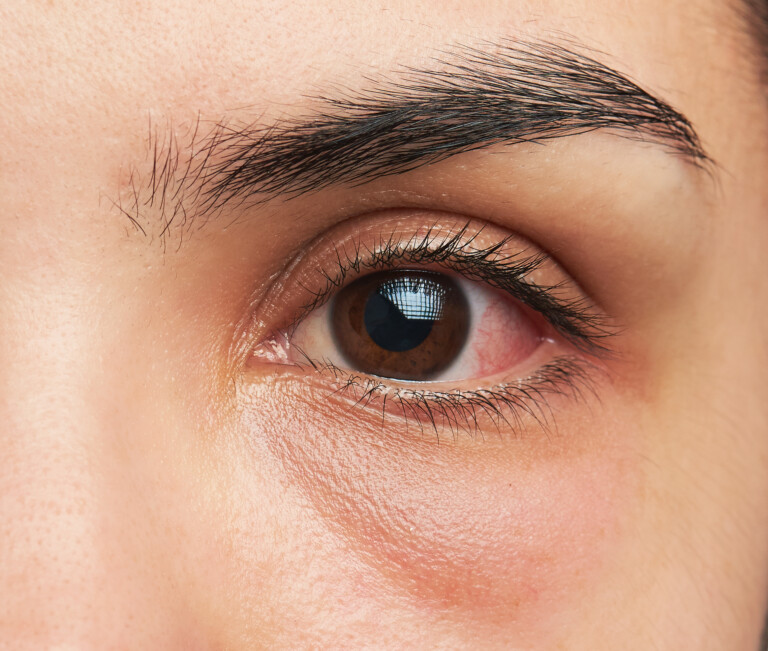PLX Academy · News · 04 May 2022

Nearly 16.5 million adults in the US have been diagnosed with chronic dry eye. According to a new survey, most of them feel misunderstood and unsatisfied with their treatment.
Dry eye feels uncomfortable. That is a result when your natural tears do not adequately lubricate the eyes. Nearly 16.5 million adults in the United States have been diagnosed with chronic eye. About 6 million more have symptoms but have not been diagnosed. In the Chronic Dry Eye In America Survey, the Health Union interviewed 415 Americans with chronic dry eye about their experience managing the condition.
The most frustrating thing about dry eye is that almost half (48 %) of the patients with dry eye have carefully followed their treatment plan but only 13% have experienced lasting relief. Most people say that over-the-counter eye drops alone do not provide sufficient relief, and seek out additional treatments.Among them are domestic remedies that include drinking additional water through the day (76 %), using a warm compress (56%), blinking often (52%), avoiding cigarettes and secondhand smoke (45%) and thoroughly removing eye makeup (34%).
Frustration with how dry eye is diagnosed or perceived, can be seen from the data which indicates that between a quarter and a third of the people say that their condition has been written off as an “old person’s disease” or attributed to something less severe such as allergies. Nearly half of the people feel that others do not understand what they are going through or appreciate the reality of their discomfort.
Many people struggle with the debilitating symptoms of dry eye. Most of them, have multiple symptoms such as dryness (76%), foreign body sensation (64%), eye fatigue (62%), light sensitivity (62%) and blurred vision (60%), as well as burning, scratchiness and itchiness.
Seemingly simple activities that people perform on a daily basis can be hard when chronic dry eye is in control. The condition may force you to change anything from activities you enjoy to how you work. Dry eye interferes with many aspects of everyday life, including driving at night (56%), reading (42%), using a computer (34%) and watching television (24%). You may experience dry eye in certain situations, such as on an airplane, in an air-conditioned room, while riding a bike etc.
The path to finding a treatment that works or makes the symptoms more manageable can be long and frustrating. Chronic dry eye is often misunderstood by both doctors and people with the condition. Experts say that dry eye is often mistaken for other conditions because ocular surface disease is very complex with subtypes and overlapping symptoms. “Getting to a correct diagnosis requires expertise and can take time. A lot of symptoms are labeled and treated as dry eye, but patients may not be getting better because there are other things going on”, according to dry eye expert Christopher Starr, MD, an Associate Professor of ophthalmology at Weill Cornell Medical for the American Academy of Ophthalmology.
Allergic conjunctivitis, blepharitis, meibomian gland dysfunction, floppy eyelid syndrome, corneal dystrophies and toxicity to medications or cosmetics are just a handful of the many conditions that can be incorrectly referred to as dry eye disease, Starr says. While artificial tears can provide temporary relief in many of these cases, they do not treat the underlying causes.
“People who are feeling frustrated should not give up. There are a growing number of diagnostic tools to pinpoint the root problems and an expanding number of treatments to address them”, Starr says. There are many devices and medications available today, and even more effective treatments are on the horizon. Many people find it necessary to combine therapies and make a few lifestyle changes. The right treatment regimen can involve a lot of daily maintenance.
Treatments for dry eyes may make you more comfortable. These treatments can include lifestyle changes and eye drops. You will likely need to take these measures indefinitely to control the symptoms of dry eye.Тhe most important thing is to go for regular eye exams and consult your ophthalmologist for any changes related to your eyes and vision in general.
